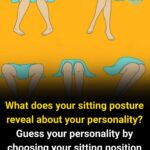In the digital age, puzzles and optical illusions have become a popular way to challenge our brains and keep us engaged. One such image, which has been making waves across social media, dares viewers to find a hidden cat among a sea of human faces. At first glance, the picture appears to be an intricate collage of diverse individuals, but somewhere within this crowd, a feline is stealthily camouflaged.
The Psychology Behind Optical Illusions
Our brains are wired to recognize familiar patterns, especially faces. This cognitive tendency, known as pareidolia, makes us naturally attuned to identifying human features in various images. However, when an unexpected element—like a cat—is hidden within such an image, it forces our brains to break away from automatic recognition and engage in more active problem-solving.
This type of puzzle taps into selective attention, which is the brain’s ability to focus on a specific detail while ignoring distractions. Some people find the cat immediately, while others may struggle for minutes, proving how individual perception differs.

Why Do People Love These Challenges?
Puzzles like this offer more than just entertainment. They provide:
- Mental Exercise – Brain teasers help improve cognitive abilities, including memory, concentration, and pattern recognition.
- Stress Relief – Focusing on a visual puzzle can be a great way to take a break from daily stress.
- A Sense of Accomplishment – Finding the cat in a sea of faces delivers a small but satisfying reward to those who succeed.
- Social Media Engagement – These images go viral because they invite discussion and friendly competition. People love to challenge their friends and compare their observation skills.
- Tips to Spot the Cat Faster
If you’re struggling to find the hidden cat, try these techniques:
Step Back – Looking at the image from a slight distance can help you see the pattern differently.
- Focus on Details – Instead of scanning randomly, look for feline features like pointed ears or whiskers.
- Change Your Perspective – Sometimes tilting your head or looking at the image from an angle reveals the answer.
- Scan from One Side to Another – Methodically move your eyes from left to right or top to bottom.









